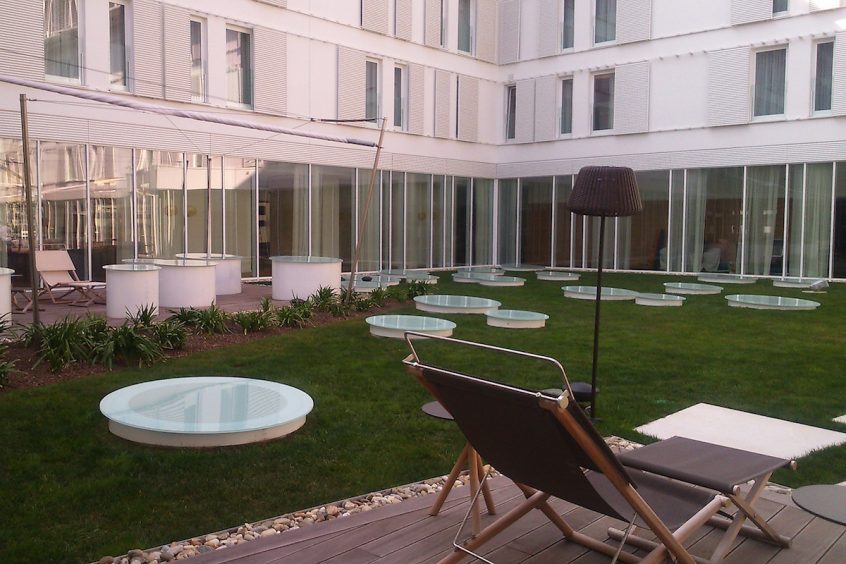Engineers always doubt declarations of being permanent, the best, the most effective … This is because we know that every material has good and, in certain circumstances, poor characteristics. Also, we know that in construction, a single component is rarely used by itself, independent of other components, and that longterm advantage is only guaranteed by verified assemblies – mostly systemically defined solutions.
Especially in flat roofs, choosing the appropriate system solution very much affects the roof’s durability. A good number of flat roofs leaked “for no reason” and soon, flat roofs acquired a bad reputation. You probably know the joke – that there are only those flat roofs that are already leaking, and those that will leak very soon. But did these roofs really leak for no rhyme or reason? An inappropriate flat roof system solution where waterproofing is directly exposed to external factors can quickly result in conditions where waterproofing is subjected to local climatic conditions or to damages that occur during construction or during the building’s use. A minimally opened joint, a notch in the waterproofing while drilling openings, a little hole made by some falling object escaping the talons of a flying bird, a pebble in the shoe soles of a person walking on the roof are enough for the water not only to penetrate but also to permeate the roof structure layers, thus depriving them of their basic functionality. Inside the building, this is felt in terms of poor thermal insulation, higher heating and cooling costs or water spots on our ceilings.
Due to poor past experience with leakages in flat roofs, it was attempted to “shade” the exposed waterproofing with pebbles in order to reduce the effects of UV rays and slow down the aging and deterioration of the waterproofing material. However, roof durability did not improve. On the contrary, due to temperature cycles, roofs were still exposed to faster aging, and the parapet walls did not escape the devastating impact of ultraviolet rays. Also, walking on pebbles often caused the softened and brittle waterproofing to crack and the roof needed repair much sooner than expected. Although the proverb of “roofs only being watertight until the contactors leave” is supposed to be only a proverb, reality often proves it right. Contrary to new roof construction, renovations are usually carried out without much fuss unless the building under repair is well known and the press gets wind of the roofer’s mistakes … In the end, renovation costs ultimately surpass the savings from simplified or inconsistent roof construction, not to mention the waste of time and nerves of both the contractor and the investor.
Truth be told – immediate damages are usually caused by roof contractors or those subcontractors next in line. We can, however, prevent such damages by designing and implementing a verified and safe roof system.
The goal of every investor, designer, contractor and, last but not least, the construction supervisor is a durable flat roof – and inverted roof systems provide all the necessary guarantees.
Another important advantage is offered by the inverted roof system. Over the years, it has evolved into an excellent energy shield as well as usable area, offering long term exceptional benefits to the investor.

 +386 7 39 39 510
+386 7 39 39 510 advice@energyshield.biz
advice@energyshield.biz
